| Your browser is not supported. | ||
|
Please browse our site using any of the following options:
| ||
How to fish for Yellowfin Whiting
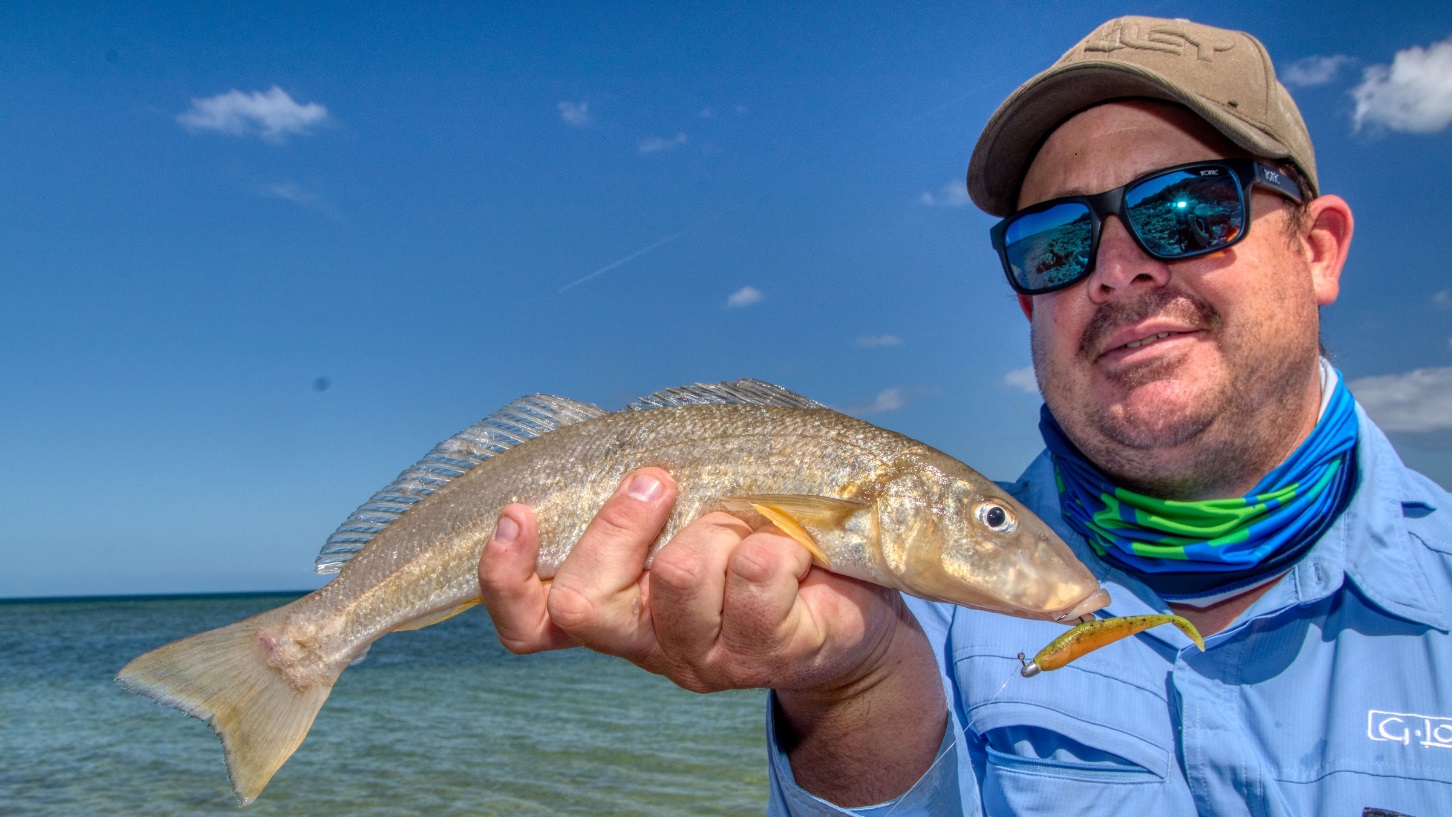
As Shane Mensforth explains, yellowfin whiting are right up there with the most exciting light tackle fish available in southern Australia. Catching them on baits and lures has never been more popular.
I've always loved chasing yellowfin whiting - a passion that began when I was a teenager and still flourishes today. They're close to the ideal inshore fish, providing terrific light tackle action and some of the best seafood available. Back in high school times, my typical yellowfin day would begin in the morning by push-biking to a local estuary to dig worms, then riding home to clean up and get the tackle ready for the afternoon run-in tide. Adelaide's metro jetties were my usual stomping ground, and if I didn't catch at least a dozen fat whiting during an arvo session, I would pedal home disappointed.
The fishing gear I used back in that era was pretty agricultural by today's standards; a Steelite centre-pin reel, solid glass rod, 15 pound line and two ounce barrel sinker hardly qualified as 'light tackle', but it did the job well enough. I often wonder how much better my results would have been if I'd been fishing then with the yellowfin gear I use today!
Despite the fact that yellowfin continue to be netted commercially, their numbers remain quite strong. They can be found in various locations in the southern states at different times of the year, but for the most part, late spring through until Easter is high season. It pays to know a bit about their seasonal movements, as well as tides, preferred weather and water conditions, to build a reliable knowledge bank and put you on the track to consistent catches.
Working with the tides
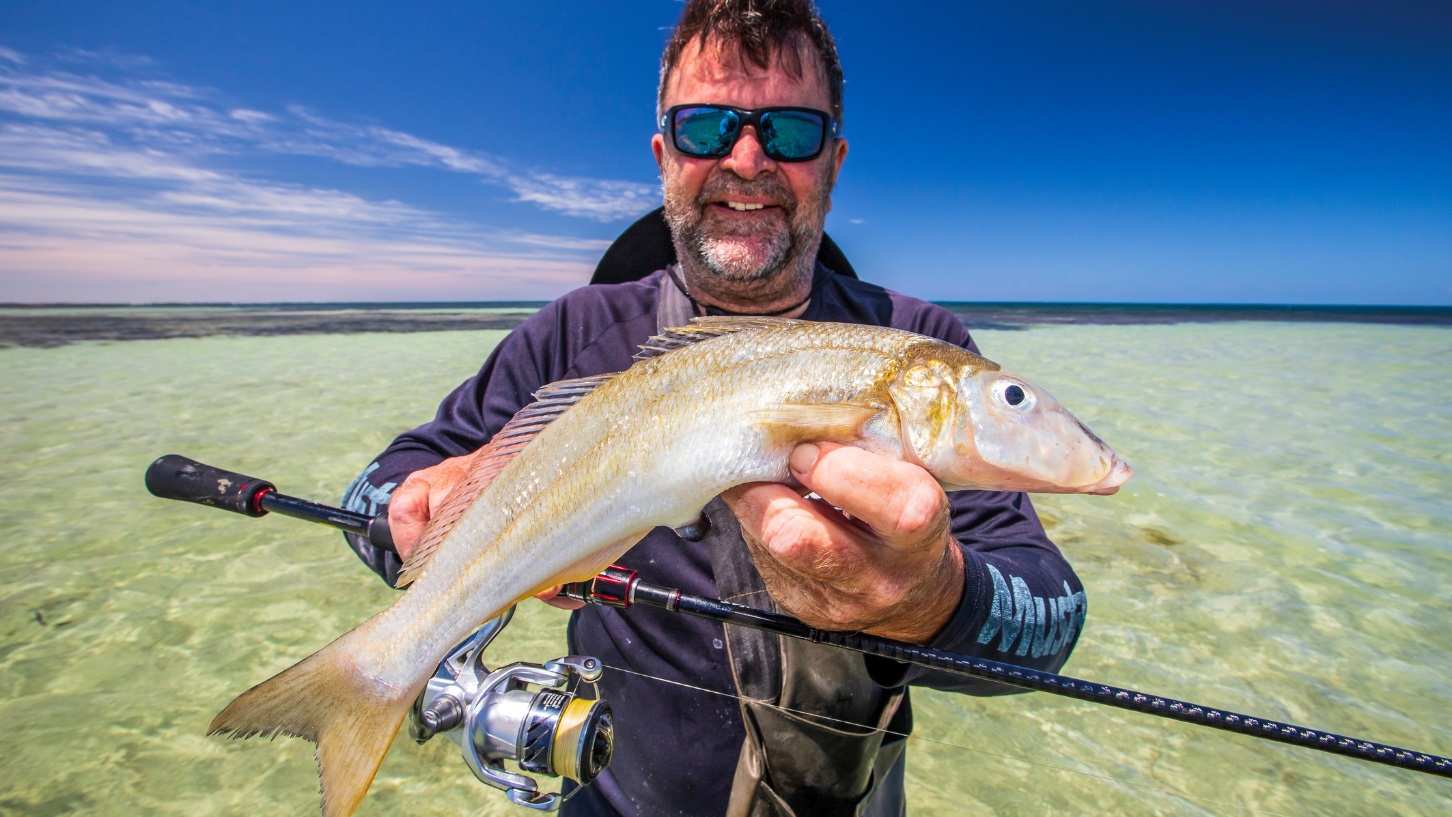
There are some exceptions (generally pertaining to specific locations), but most yellowfin whiting are caught on the rising tide. As the sand flats drain on the ebb, the worms, yabbies and other natural whiting tucker retreat into their burrows or tubes. As soon as the water turns to flow back in again, these creatures start to poke their heads out to grab their prey - the micro-organisms and detritus that are swept in with the rising water. The yellowfin begin to feed actively at the same time, gradually swimming in over the flats and grubbing through the sand and weed as they go.
It's often possible to catch yellowfin in water as shallow as 30cm, particularly on an overcast, breezy day. However, most seem to be hooked when the water is between knee and waist, and this is the depth I prefer to work in when flats fishing. The idea is to walk out as the tide starts to flood, prospecting likely-looking areas as they are covered by rising water. Occasionally, when I've waded out to almost waist deep, I'll turn around and cast back toward shore. This enables a shot at fish that may have swum in past you as you were wading out.
Quite often the bites start to shut down as the flats are completely flooded and the tide nears its peak. This is probably because the whiting are spread far and wide by this stage, and locating them in numbers becomes far more hit-and-miss. Occasionally it's worth retreating completely from the water and casting your bait or lure just a few metres from the shoreline. A few late feeders may still be lurking right on the beach, and on more than one occasion I've topped off my bag near the end of the session by prospecting in close.
Choosing your fishing gear
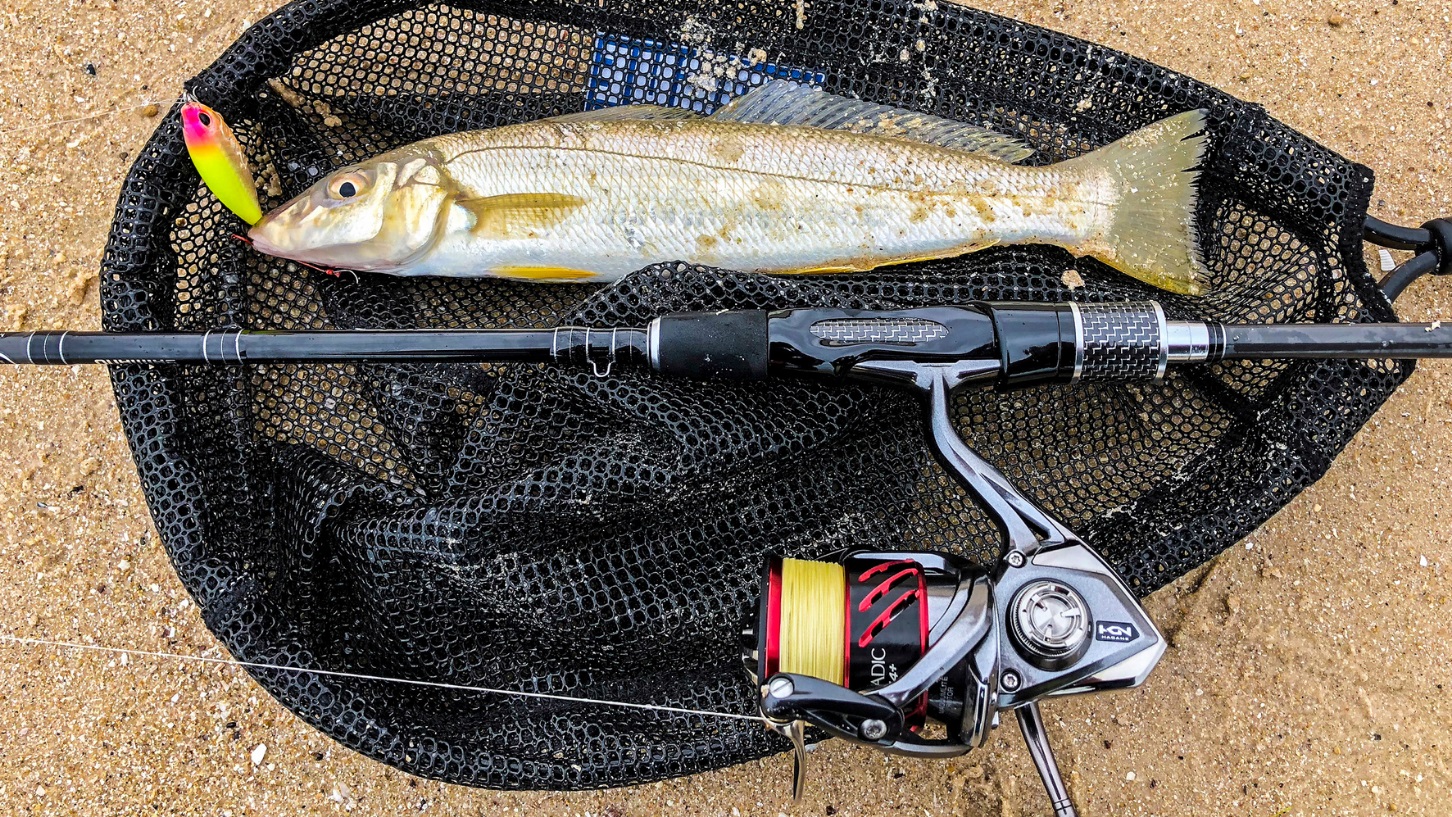
Because I do a lot of fishing for yellowfin whiting in varying locations, I own several outfits that are used consistently. I fish with both bait and lures, and have dedicated rod/reel combinations for each style. However, it's practical to buy just one yellowfin outfit that will cover all bases, and you don't have to spend a fortune to own a highly efficient set-up.
A seven-footer is my preferred rod length (that fishes 4-6 pound line nicely) and I simply love throwing little poppers and stickbaits. You can find plenty of affordable rods and reels, that will do the job but make sure the reel is light, comfortable to use over an extended session and has a smooth drag. The rod needs to be fairly responsive for casting small lures and sinkers, with a sensitive tip for bait fishing.
Fishing tackle for bait
In keeping with the rest of your yellowfin whiting outfit, terminal tackle should be as light and subtle as you can get away with. These fish can be pretty finicky at times, especially in super shallow water on a bright, still day, and you can only help your cause by keeping things unobtrusive at the business end.
My 'go-to' hook when targeting yellowfin is a chemically sharpened size six. These are made from strong wire and their extra-long shank minimises swallowing, which can be a problem during a hot bite. It's a real pain when you stumble onto a school of willing biters and have to spend 30 seconds or longer trying to extract a hook that's been swallowed past the gills. A hook with an extra-long shank also affords some protection from the menacing jaws of puffer fish, the scourge of the flats fisherman!
I like to use ten pound fluorocarbon in my yellowfin rigs, as it's a little more abrasion resistant than nylon monofilament and, according to the experts at least, harder for fish to see. Going lighter than ten pound on the hooks may win you the odd extra bite, but it markedly increases the possibility of break-offs after extended use, and isn't recommended.
I like to use the lightest sinker possible when fishing the flats, which occasionally means dropping right back to split shot in ideal conditions. For the most part, however, I'll slide on a tiny ball or bean sinker - usually 7-10g - that runs between the top and bottom hooks.
The best baits

Using baits that occur naturally in the yellowfin whiting's feeding zone is the obvious way to go. Live clickers, those diminutive, little saltwater yabbies armed with one oversized claw, are right at the top of the pile. They can be gathered quite easily on the flats with the aid of a stainless steel bait pump, and I'll guarantee there isn't a yellowfin swimming that will refuse one if it's presented properly.
Next on my list are blood worms, seaweed worms and beach worms, all of which can be gathered locally by those with some spare time and are deadly yellowfin bait. There's a bit of technique involved in extracting beach worms from the sand, but once you get the knack, it's really not difficult at all.
Pieces of green prawn meat make a reasonable backup bait if you haven't got access to worms or clickers, and there are a couple of choices in this regard. Most of the bait prawns available from tackle stores are of good quality, and an average prawn will make at least two baits. I like to peel them first, as this makes them easier for a marauding yellowfin to suck into its mouth, and also releases internal aromas that drag the fish in.
The second alternative is to buy 300g-400g of fresh green king prawn meat from a fish processor and cut it into bait-size pieces prior to freezing. It's handy to have pre-cut baits available when the whiting bite is on, and often I'll use a prawn bait on one hook and a worm on the other. This stretches out the worms if you have a limited supply, and on rare occasions the prawn will outfish the worm, so you have all bases covered.
Not long back I came across a guy fishing the flats who was using tenderised chicken breast for yellowfin. Believe it or not, he had half a dozen lovely fish in his shoulder bag, so I guess anything is possible!
Lures that work
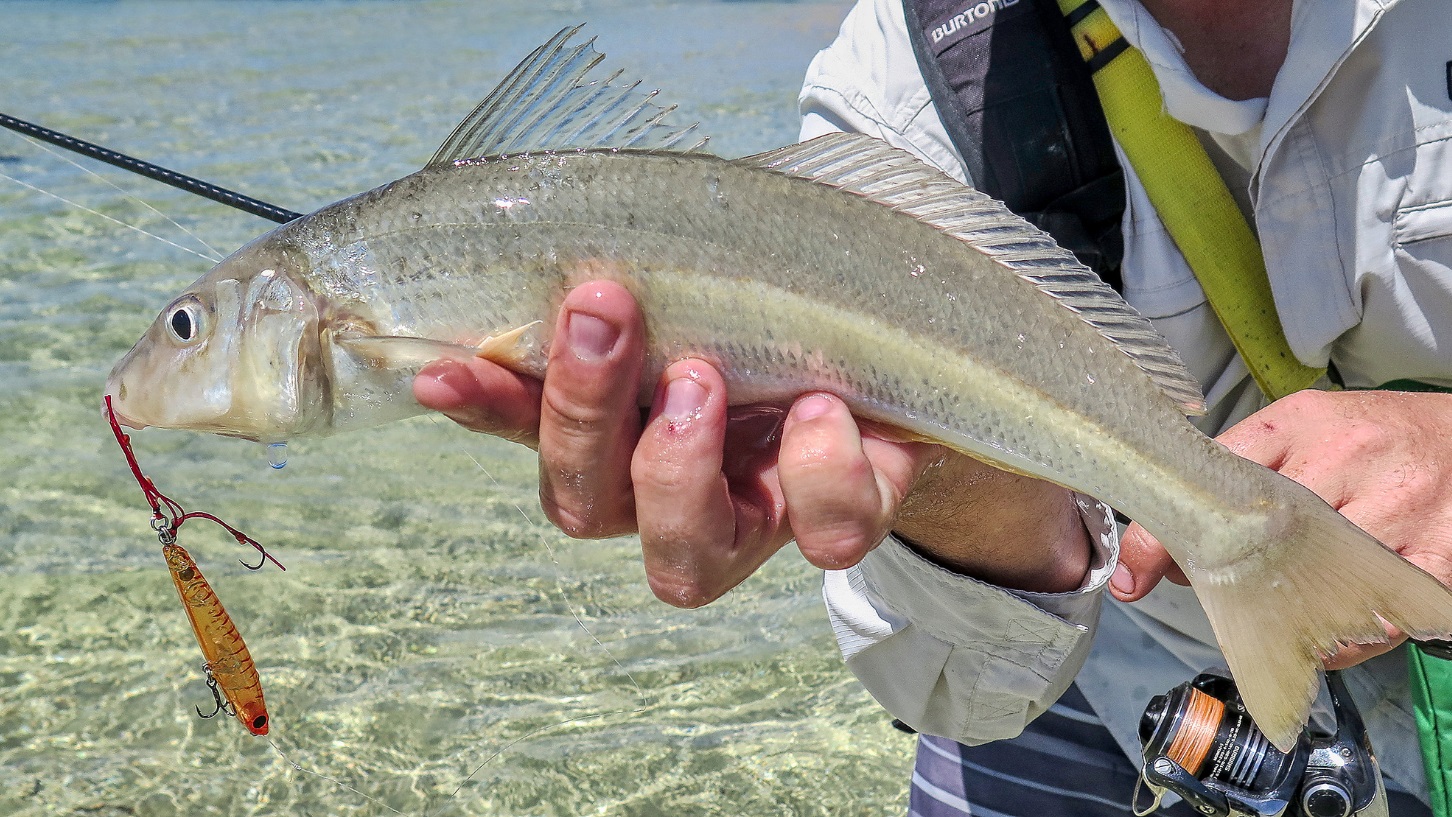
Being highly predatory fish, yellowfin whiting can often be tempted by a well-presented surface lure. In fact, catching inshore whiting on small poppers and stickbaits has become extremely popular.
Stickbaits are best retrieved with a short, flicking action and at slow to moderate speed. It's also a good idea to replace the original treble hooks with something a little smaller. This will definitely improve the hook-up and retention rate.
As far as popper-style lures go, colours don't seem critical. Most of the better-known lure makes now offer lightweight poppers suitable for yellowfin whiting. Go for something of around 5-6cm long with a decent cup face and super sharp lightweight treble hooks.
Although we don't do much soft plastic fishing for yellowfin on the flats, there is no doubt this style of lure is worth carrying. You'll need super light (3g) jig heads. I'm not sure if colour is critical, but natural patterns are proven whiting catchers. Interestingly, they also work a treat on King George whiting out in the boat.
The inevitable by-catch
Rarely a whiting session goes by without something else grabbing your bait or lure. Some of this by-catch is welcome, while there are a few little pests that most definitely aren't. I don't mind hooking the occasional tommy ruff or two, particularly if they are big ones, and rarely get upset about catching a decent mullet, salmon or flathead. I do get upset, however, when one of those obnoxious puffers attacks the bait.
Unfortunately, puffers are a fact of life, wherever you bait fish for yellowfin whiting. They are unpleasant to handle, they regularly swallow hooks, and they'll often rush in and beat your target species to the bait. If you do manage to snag a puffer inside the mouth before it has the chance to swallow your hook, the chances of getting that hook out again without damaging or distorting it are slim. As mentioned earlier, this is why I always carry a good supply of spare pre-tied hooks that I can loop on and off after a puffer encounter.
An excellent table fish
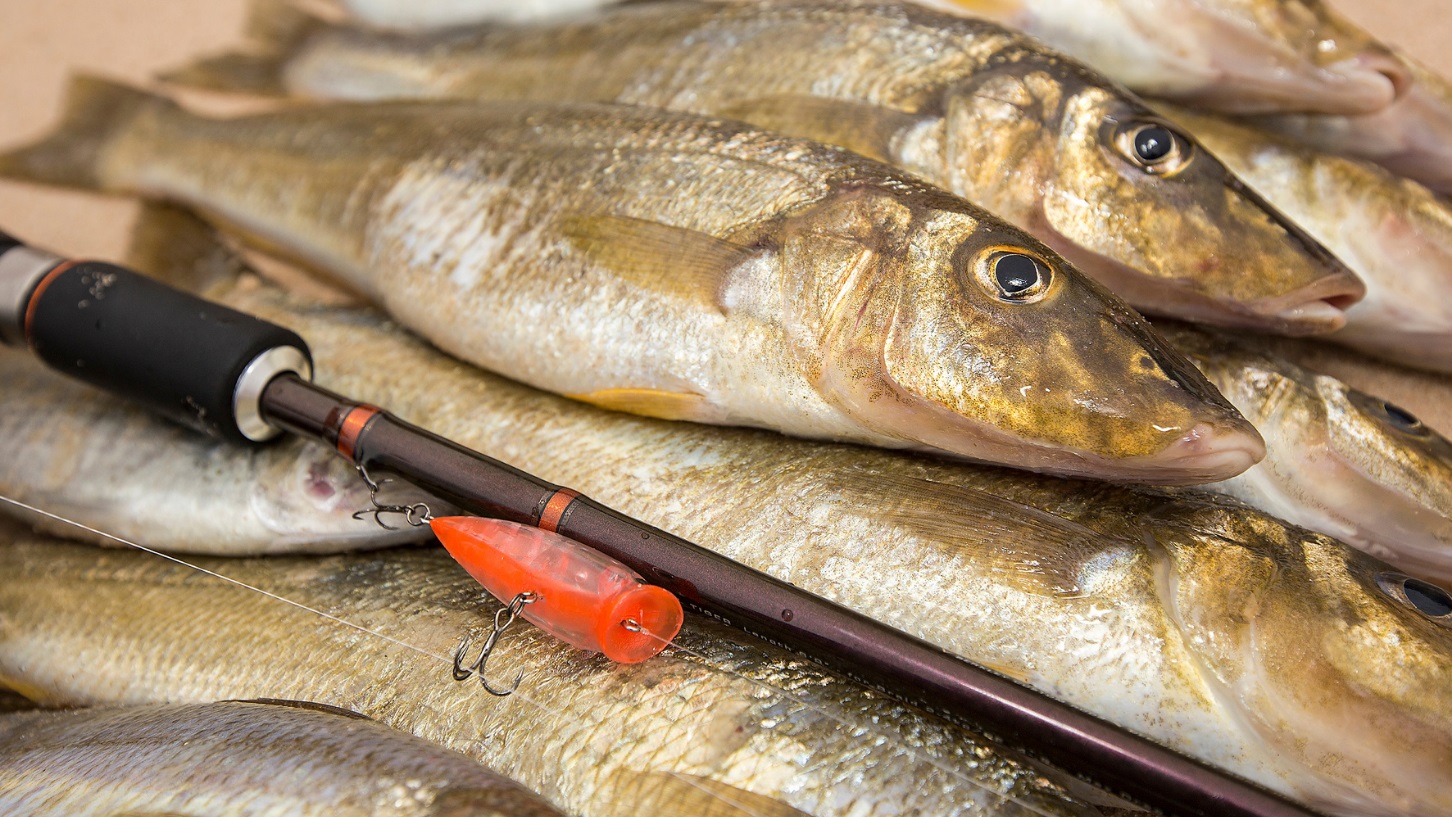
I rate fresh yellowfin whiting fillets right up there with flathead and gar as my favourite table fish. In warm weather it's mandatory to keep your catch moist and as cool as possible, as yellowfin will deteriorate noticeably if left in a shoulder bag for several hours. Although it's a bit of a hassle, we like to carry a small cooler onto the beach, leaving it above the high tide mark and visiting it periodically to deposit the caught fish on ice. If you're fishing in tandem, taking turns on the cooler run makes life a little easier, and it really is worth the extra effort.
I will then scale, head and gut the fish at the end of the session before driving home, returning them to the ice as soon as they have been rinsed off in sea water. Refrigerating the whiting overnight enables the flesh to 'set' and makes the filleting job much easier.
While yellowfin whiting freezes well, particularly if it's vacuum-packed, I don't think it lasts as long as its King George cousin. We rarely manage to keep yellowfin in the freezer for more than a few weeks anyway, as the extended family is always on the lookout for a feed!
While I love serving these great table fish in a number of ways, frying them in a very light Japanese tempura batter is undoubtedly my favourite. The flesh is delicate and sweet, lending itself perfectly to the tempura option, but the golden rule is to keep the batter as thin as possible and minimise cooking time. Provided your oil is hot enough, an average battered fillet should take no longer than 40 seconds in the deep fryer, with a crisp, golden brown and absolutely delicious result.
Find your local Anaconda store and check out our extensive range of fishing gear for your next fishing trip.